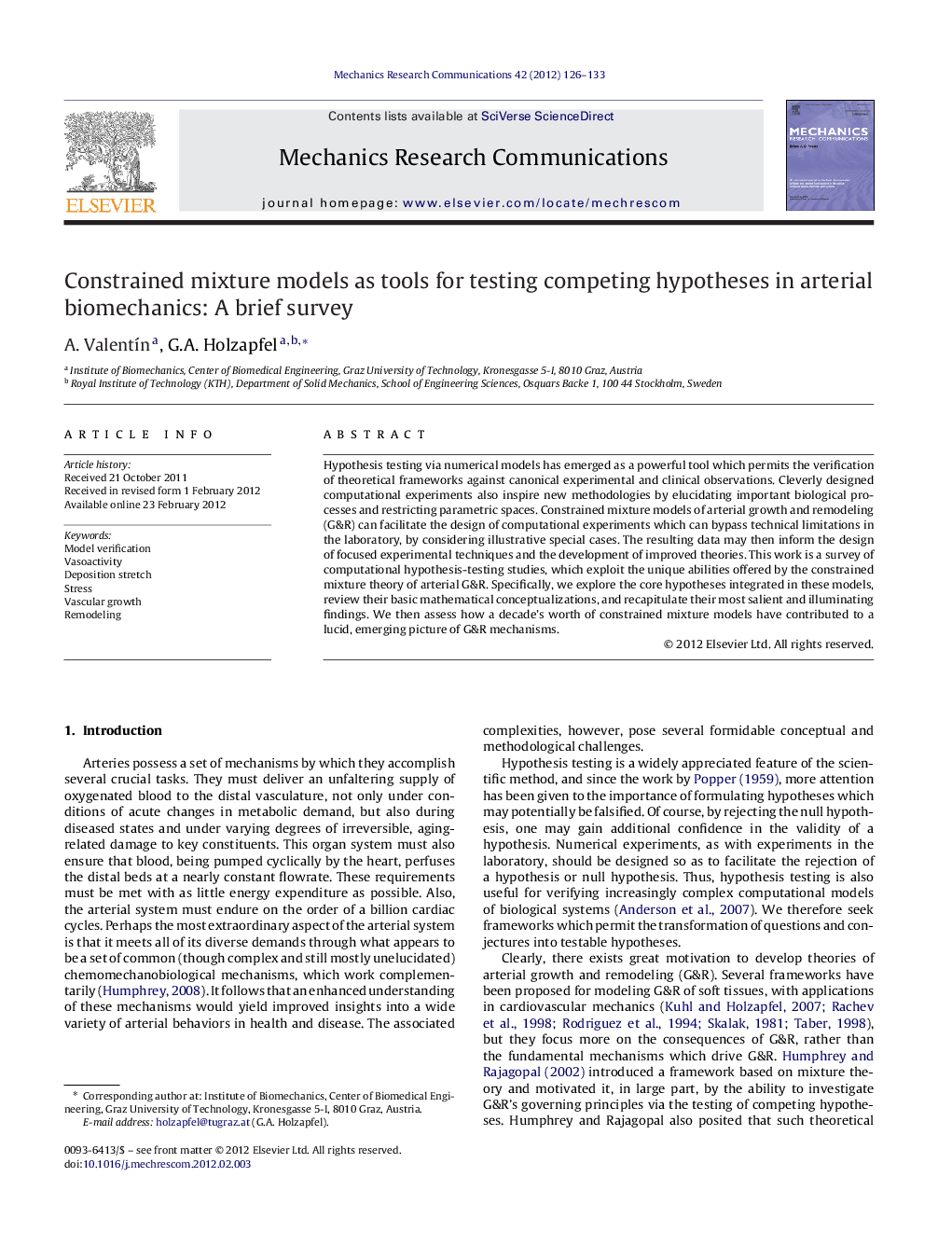| Article ID | Journal | Published Year | Pages | File Type |
|---|---|---|---|---|
| 799195 | Mechanics Research Communications | 2012 | 8 Pages |
Hypothesis testing via numerical models has emerged as a powerful tool which permits the verification of theoretical frameworks against canonical experimental and clinical observations. Cleverly designed computational experiments also inspire new methodologies by elucidating important biological processes and restricting parametric spaces. Constrained mixture models of arterial growth and remodeling (G&R) can facilitate the design of computational experiments which can bypass technical limitations in the laboratory, by considering illustrative special cases. The resulting data may then inform the design of focused experimental techniques and the development of improved theories. This work is a survey of computational hypothesis-testing studies, which exploit the unique abilities offered by the constrained mixture theory of arterial G&R. Specifically, we explore the core hypotheses integrated in these models, review their basic mathematical conceptualizations, and recapitulate their most salient and illuminating findings. We then assess how a decade's worth of constrained mixture models have contributed to a lucid, emerging picture of G&R mechanisms.
